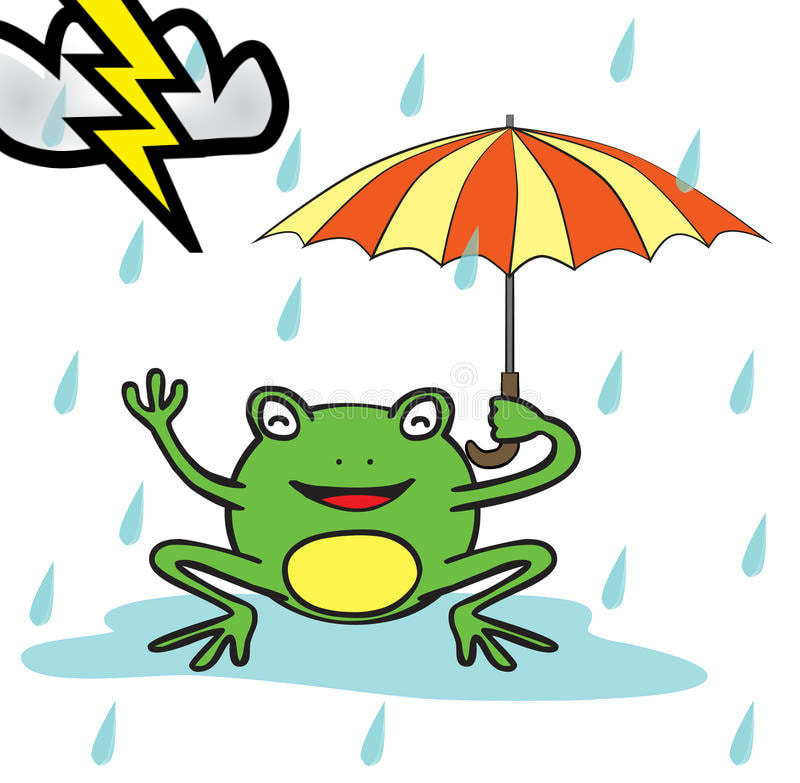1. What goes up. Warm, moist air is the fuel that starts a thunderstorm. A column of warm air that rises up through the atmosphere quickly is called an updraft. The strength of the updraft depends on how great the temperature difference is between levels of atmosphere. An updraft can exceed 100 miles per hour in a very strong thunderstorm.
2. The top of the storm gets smooshed. An updraft will continue moving upward until the warm, rising air is no longer warmer than the air that surrounds it. At this point, the rising air begins to spread out, having reached its "ceiling." This forms the anvil-like clouds that make a distant thunderstorm look so impressive. The beautiful "bubble-like" clouds that can develop along the bottom of the anvil clouds are called mammatus clouds. Storms need to be strong in order to produce these beautiful cloud formations.
3. Rain drags a storm down. "Once the weight of the raindrops suspended in a budding thunderstorm grows too heavy for the updraft to hold, or once raindrops fall out of the sides of the updraft, they begin falling to the ground as precipitation. The falling rain drags cooler air toward the ground, creating a downdraft, or that cool breeze you feel before and during a storm. Most downdrafts are pretty weak, but some are strong enough to cause damaging winds at the surface. A thunderstorm dies once the cool air of the downdraft cuts off the flow of warm air to the updraft, starving the storm and causing it to rain itself out."
4. There are three main types of thunderstorms. The most common type are known as single-cell storms. that's the kind my family experienced yesterday at the playground. They build up, rain for half an hour or so, then dissipates. When the storm collapses, the wind from the downdraft can trigger more storms in a chain reaction. The next type of storm is a multi-cell thunderstorm. The most common type is called a squall line. The third type of t-storm is known as a super-cell. This storm has a rotating updraft. When the updraft rotates, it causes the storm to produce more severe weather with larger hail, stronger winds, and even tornadic activity is found in a typical thunderstorm.
5. Hail bounces around like popcorn! When the temperatures are just right in the middle of the thunderstorm, some of the raindrops will start to freeze as they bounce around in the updraft. "The up-down motion of the newly-formed hailstones will cause more liquid to accumulate on the outside of the stone, a process that causes hailstones to grow in layers like an onion."
6. Thunderstorms are electrifying! The friction between ice crystals, raindrops, and hailstones moving around in a storm can cause electrostatic buildup between the clouds and the ground that releases its energy in the form of a brilliant flash of lightning. And FYI...there's no such thing as heat lightning. This phenomenon is caused by a thunderstorm that's simply too far away for us to hear. The average temperature of lightning is 20000 degrees C. or 36000 degrees F.
7. Storms can be heavy. One cumulus cloud can weigh more than 1 million pounds!
8. Humans can cause thunderstorms. "Humans can't control the weather, but our actions can indirectly influence where thunderstorms form. Studies have shown that increased temperatures in and around cities, due to the urban heat island effect, can trigger thunderstorms that wouldn't have otherwise formed in these areas if the city and its streets weren't there. There's also some evidence that unstable air warmed by steam released by the cooling stacks of nuclear power plants can trigger small storms."
9. It can thunder when it's snowing. Intense bands of snow can develop during blizzards.
These strong bands can produce lightning and loud cracks of thunder all while dumping copious amounts of snow in a short period of time.
10. Yes, it can actually rain frogs...or fish, or other odd objects. If a tornado sucks the water out of a pond, for example, it's very possible that the critters that used to be in the water will fall on populated areas.
11. Thunder is difficult to hear over 12 miles in distance (20 kilometers).
12. Astraphobia is the fear of thunder and lightning.
I hope you've learned a few things from my blog today. It was rather long but sometimes there's simply just a great deal of information I want to share! Have a great day and until tomorrow, I wish you
Peace.

 RSS Feed
RSS Feed